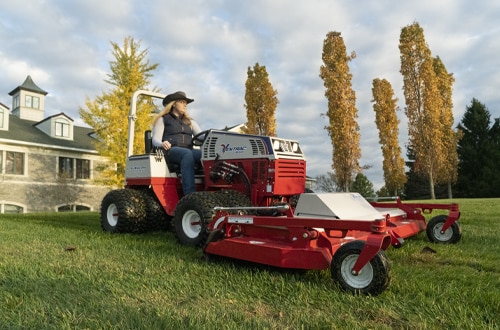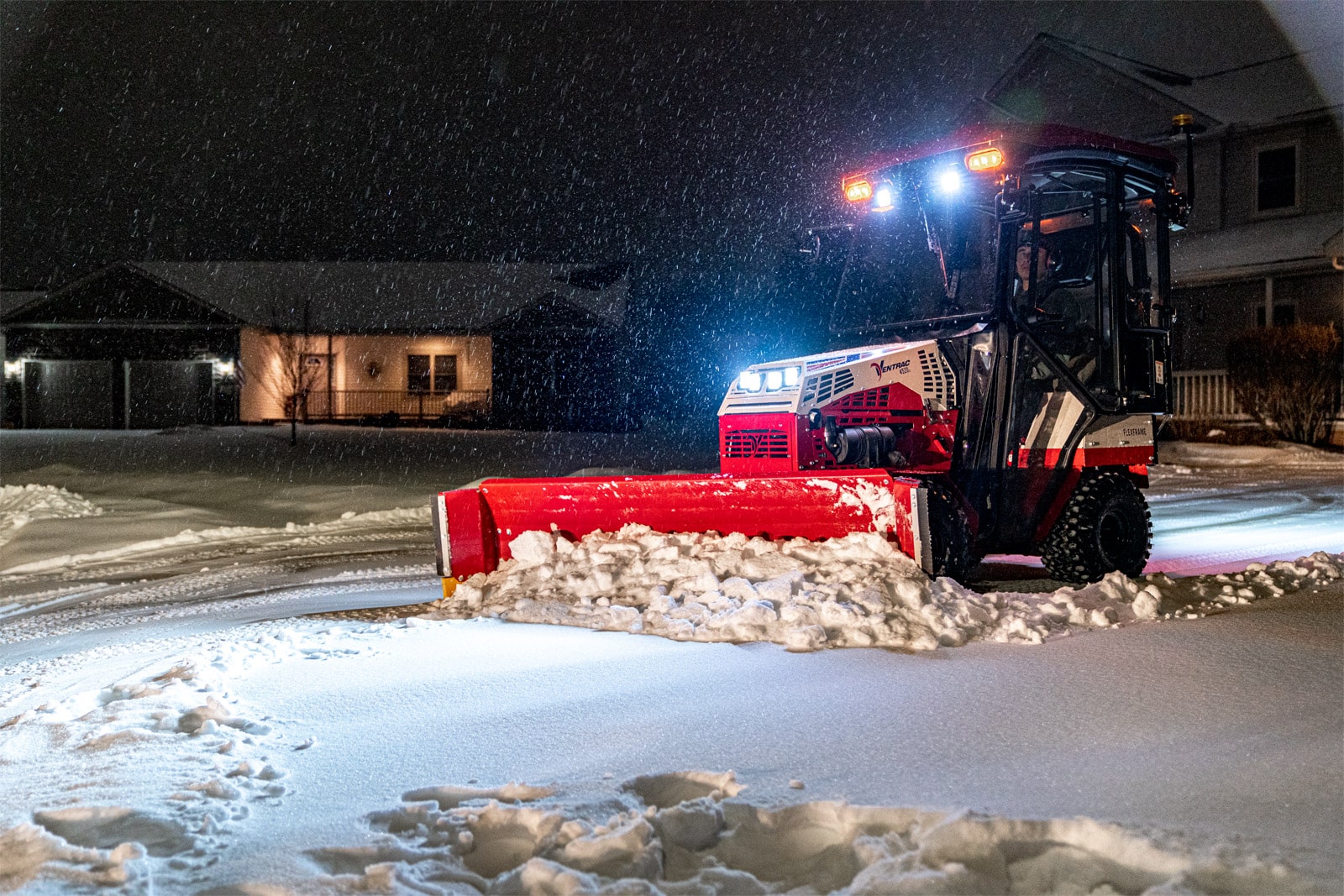Cultivating Tomorrow: How Smart Equipment is Shaping Caledonia’s Farms.
Premise: The agricultural landscape in Caledonia, like farming communities worldwide, stands at the cusp of a technological revolution. Integrating advanced technologies into farm equipment is no longer a futuristic fantasy but a present-day necessity for enhancing efficiency, sustainability, and profitability. This article explores ten key areas where technology is transforming agriculture in Caledonia, empowering farmers to cultivate a more prosperous and resilient future.
Introduction:
The fertile lands surrounding Caledonia have long been a cornerstone of the region’s economy and identity. Generations of farmers have toiled the soil, adapting to changing seasons and market demands. Today, a new era is dawning, one where digital innovation is poised to redefine the very essence of farming. From autonomous machinery navigating fields with pinpoint accuracy to data-driven insights optimizing resource allocation, technology is rapidly becoming an indispensable partner in the agricultural process. For farmers in Caledonia, embracing these advancements isn’t just about keeping pace; it’s about securing the longevity of their livelihoods, contributing to a sustainable food system, and maximizing the potential of their land. This journey into the future of farming in Caledonia reveals ten crucial ways technology is being integrated into agricultural equipment, offering a glimpse into a more efficient, precise, and ultimately rewarding agricultural future.
-
Precision Guidance Systems: Navigating Fields with Unprecedented Accuracy.
Gone are the days of relying solely on visual markers and manual steering. Modern agriculture equipment in Caledonia is increasingly equipped with sophisticated Global Navigation Satellite System (GNSS) technology, enabling precision guidance. These systems, often utilizing Real-Time Kinematic (RTK) correction, offer centimeter-level accuracy, allowing tractors, planters, sprayers, and harvesters to follow predetermined paths with minimal overlap or gaps. This precise navigation translates directly into significant benefits for Caledonia farmers. Fuel consumption is reduced as equipment operates optimally without unnecessary travel. Seed placement becomes more accurate, leading to uniform crop emergence and improved yields. Fertilizer and pesticide application can be precisely targeted, minimizing waste and environmental impact. Furthermore, automated guidance systems reduce operator fatigue, allowing farmers to focus on other critical tasks during field operations, boosting overall productivity and efficiency during demanding seasons.
- RTK Correction: Provides high-accuracy positioning data by using a network of base stations to correct GPS signals in real-time.
- Benefits: Reduced fuel costs, optimized seed and input placement, decreased operator fatigue, improved field efficiency, and minimized environmental impact through targeted applications.
- Variable Rate Technology (VRT): Tailoring Inputs for Optimal Growth.
Recognizing that field conditions and soil properties can vary significantly even within a single farm in Caledonia, Variable Rate Technology (VRT) empowers farmers to apply inputs like seeds, fertilizers, and pesticides at varying rates based on specific needs. This data-driven approach relies on sensors, GPS mapping, and sophisticated software to analyze soil composition, nutrient levels, and yield potential across different zones within a field. Equipped with VRT-enabled equipment, Caledonia farmers can then precisely adjust the application rates of inputs as they move across the field. This targeted application ensures that each area receives the optimal amount of resources, maximizing crop uptake, reducing waste, and minimizing environmental runoff. The result is healthier crops, higher yields, and significant cost savings on inputs.
- Data Sources: Soil maps, yield maps from previous harvests, sensor data (e.g., nutrient sensors, soil electrical conductivity), and drone or satellite imagery.
- Benefits: Optimized resource utilization, reduced input costs (seeds, fertilizers, pesticides), minimized environmental impact, improved crop uniformity, and enhanced overall yields.
- Autonomous Tractors and Machinery: The Dawn of Driverless Farming.
The concept of autonomous or driverless agricultural equipment is rapidly moving from research labs to the fields of Caledonia. These advanced machines utilize a combination of GPS, sensors (including lidar and cameras), and sophisticated algorithms to navigate fields, perform tasks, and make real-time adjustments without direct human intervention. While fully autonomous fleets might still be on the horizon for many Caledonia farms, we are already seeing the emergence of semi-autonomous features and robotic solutions for specific tasks. Autonomous tractors can operate for extended hours, optimizing planting, tillage, and harvesting schedules, especially during peak seasons when labor can be a constraint. This technology promises to increase efficiency, reduce labor costs, and potentially enable farming on a larger scale with the same workforce.
- Current Applications: Auto-steer systems, robotic weeding, automated harvesting of specialty crops, and autonomous scouting drones.
- Future Potential: Fully autonomous tractors for all field operations, robotic planting and harvesting, and collaborative swarms of autonomous machines working together.
- Sensor Technology and Data Analytics: Gaining Real-Time Insights into Crop and Soil Health.
A wealth of data is constantly generated on a modern farm, and sensor technology is crucial for capturing this information. In Caledonia, farmers are increasingly utilizing sensors embedded in equipment, deployed in fields, or mounted on drones and satellites to monitor a wide range of parameters. Soil moisture sensors provide real-time data on irrigation needs, preventing over or under-watering. Nutrient sensors can assess the availability of essential elements in the soil. Plant health sensors can detect early signs of stress, disease, or pest infestations. This data is then fed into sophisticated analytics platforms that provide farmers with actionable insights, allowing them to make informed decisions about irrigation scheduling, fertilization, pest management, and harvest timing. This data-driven approach leads to more efficient resource management and proactive problem-solving.
- Types of Sensors: Soil moisture, nutrient, temperature, humidity, light, plant health (NDVI, thermal), and yield monitors.
- Data Platforms: Cloud-based software for data visualization, analysis, and decision support, often integrating with farm management systems.
- Connected Equipment and the Internet of Things (IoT): Seamless Data Flow and Remote Monitoring.
The integration of the Internet of Things (IoT) into agriculture equipment is creating a network of connected machines and sensors on Caledonia farms. This connectivity enables seamless data flow between equipment, sensors, and farm management systems. Farmers can remotely monitor the performance of their machinery, track fuel consumption, receive alerts for maintenance needs, and even adjust settings from their smartphones or computers. This real-time visibility and control enhance operational efficiency, reduce downtime, and improve decision-making. For instance, a farmer could receive an alert about a potential malfunction on a tractor in the field and proactively schedule maintenance before a major breakdown occurs, saving time and money.
- Benefits of Connectivity: Remote monitoring of equipment status and performance, predictive maintenance alerts, automated data logging and sharing, and enhanced communication between machines and farm management systems.
- Examples: Telematics systems on tractors, remote diagnostics tools, and automated inventory management for on-farm inputs.
- Drone and Satellite Imagery: Providing a Bird’s-Eye View for Informed Decisions.
Unmanned Aerial Vehicles (UAVs) or drones and satellite imagery are becoming powerful tools for Caledonia farmers, providing a comprehensive overview of their fields from above. Equipped with various sensors, including multispectral and thermal cameras, drones can capture detailed images and data on crop health, vegetation indices, water stress, and even pest infestations. Satellite imagery offers a broader perspective and can be used for large-scale monitoring over time. The data collected from these platforms is processed to generate maps and reports that help farmers identify areas of concern, assess crop growth, and make targeted interventions. For example, a drone survey might reveal a localized area of nitrogen deficiency, allowing the farmer to apply fertilizer precisely where it’s needed.
- Applications: Crop health monitoring, vegetation analysis (NDVI), irrigation management, pest and disease detection, yield estimation, and field mapping.
- Platforms: Commercial drones with various sensor payloads, satellite imagery providers offering subscription services and analysis tools.
- Electrification and Alternative Power Sources: Moving Towards Sustainable Operations.
The agricultural sector is increasingly focused on reducing its environmental footprint, and the electrification of equipment and the adoption of alternative power sources are key aspects of this transition in Caledonia. Electric tractors and other machinery offer the potential for lower operating costs (reduced fuel consumption), quieter operation, and zero tailpipe emissions. While fully electric heavy-duty farm equipment is still in its early stages, advancements in battery technology are making it increasingly viable for certain applications. Furthermore, exploring alternative fuels like biodiesel and renewable energy sources like solar power for farm operations can contribute to greater energy independence and environmental sustainability in the Caledonia agricultural community.
- Current Trends: Development of electric tractors for specific tasks, hybrid powertrains, and the use of solar power for charging equipment and powering farm buildings.
- Long-Term Vision: Widespread adoption of electric and alternative-fuelled farm machinery, reducing reliance on fossil fuels and minimizing greenhouse gas emissions.
- Robotics and Automation for Specialized Tasks: Enhancing Efficiency in Niche Areas.
Beyond broad field operations, robotics and automation are revolutionizing specific agricultural tasks in Caledonia, particularly in areas like horticulture, specialty crops, and livestock management. Robotic arms can perform tasks like automated weeding, precision harvesting of fruits and vegetables, and even livestock feeding and monitoring. These technologies can improve efficiency, reduce labor requirements for repetitive or physically demanding tasks, and enhance the quality and consistency of output. For vineyard owners in Caledonia, automated pruning and harvesting robots can optimize vineyard management and improve grape automated pruning and harvesting robots can optimize vineyard management and improve grape quality.
- Examples: Robotic weeders, automated fruit and vegetable harvesters, robotic milking systems, automated livestock feeding systems, and vineyard management robots.
- Benefits: Reduced labor costs, increased precision and efficiency in specialized tasks, improved product quality, and enhanced animal welfare.
- Improved Ergonomics and Operator Comfort: Investing in the Well-being of Farmers.
While technology often focuses on the machine itself, advancements are also significantly improving the ergonomics and comfort of agricultural equipment for the operators in Caledonia. Modern tractors and harvesters are designed with spacious, climate-controlled cabs, advanced suspension systems, and intuitive control interfaces. Features like ergonomic seating, adjustable steering columns, and integrated displays reduce operator fatigue and stress during long working hours. Furthermore, user-friendly software and automation features simplify complex tasks, making the operation of advanced equipment more accessible and less demanding. Investing in operator comfort not only improves the well-being of farmers but also contributes to increased productivity and safety.
- Ergonomic Features: Comfortable seating with adjustable suspension, user-friendly control layouts, integrated information displays, reduced noise and vibration levels, and improved visibility.
- Benefits: Reduced operator fatigue and stress, improved safety, increased productivity, and enhanced job satisfaction.
- Telematics and Remote Diagnostics: Minimizing Downtime and Optimizing Maintenance.
Unexpected equipment breakdowns can lead to significant delays and financial losses for Caledonia farmers, especially during critical planting and harvesting seasons. Modern agricultural equipment is increasingly equipped with telematics systems that monitor machine performance in real-time. These systems can track parameters like engine hours, fuel consumption, operating temperatures, and potential fault codes. This data can be accessed remotely by farmers and service technicians, allowing for proactive maintenance scheduling and remote diagnostics. In many cases, minor issues can be identified and resolved remotely, minimizing downtime and the need for costly on-site repairs. This connectivity ensures that equipment operates at peak performance and maximizes uptime during crucial periods.
- Features: Real-time equipment monitoring, remote diagnostics, predictive maintenance alerts, automated service scheduling, and fleet management tools.
- Benefits: Reduced downtime, optimized maintenance schedules, lower repair costs, and improved overall equipment efficiency and lifespan.
Conclusion:
The future of farming in Caledonia is inextricably linked to the intelligent integration of technology into agricultural equipment. From the precision of GPS-guided machinery to the insights gleaned from data analytics and the potential of autonomous operations, these advancements are empowering Caledonia farmers to cultivate more efficiently, sustainably, and profitably. Embracing these technological innovations is not merely an option but a necessity for navigating the challenges of modern agriculture and ensuring the long-term viability of farming in the region. By investing in smart equipment and leveraging the power of data, Caledonia’s agricultural community can look forward to a future where technology and tradition work hand in hand to nourish both the land and the community it sustains.
Ready to experience the future of farming in Caledonia? At Oneida New Holland, we offer a Full New Holland Line: Agriculture, Grounds Care, Landscaping, Light Construction and Vineyard Equipment. We are your trusted source for sales, reliable service, and top-quality parts. Our extensive inventory includes a full line of New Holland agricultural equipment, as well as Ground Care, Landscaping, Light Construction, and Vineyard Equipment. We also proudly carry Husqvarna, Ventrac, Western, The Boss, Salt Dog, and Swenson for all your grounds care and landscaping needs. Contact us today for your sales or service needs and be sure to check out our latest promotions!
Address: 634 Fourth Line, Caledonia, ON, N3W2B3 Call: 905-765-5011 Website: https://oneidanewholland.com/
Frequently Asked Questions (FAQ):
Q: What are precision guidance systems and how do they benefit Caledonia farmers?
A: Precision guidance systems use GNSS technology (like GPS with RTK correction) to provide centimeter-level accuracy in field operations. This reduces fuel consumption, optimizes seed and input placement, decreases operator fatigue, improves efficiency, and minimizes environmental impact.
Q: How does Variable Rate Technology (VRT) help in managing farm inputs?
A: VRT allows farmers to apply inputs like seeds, fertilizers, and pesticides at varying rates based on specific needs identified through data like soil maps and sensor readings. This optimizes resource use, reduces costs, minimizes environmental impact, and improves crop uniformity and yields.
Q: Are fully autonomous tractors currently being used on farms in Caledonia?
A: While fully autonomous fleets are still evolving, semi-autonomous features like auto-steer are becoming common. Robotic solutions for specific tasks like weeding and harvesting are also emerging, paving the way for increased automation in the future.
Q: How can sensor technology and data analytics improve farming practices in Caledonia?
A: Sensors monitor various parameters like soil moisture, nutrient levels, and plant health, providing real-time data. Analytics platforms process this data to offer actionable insights, enabling farmers to make informed decisions about irrigation, fertilization, pest management, and harvest timing, leading to more efficient resource management.
Q: What is the Internet of Things (IoT) in the context of agriculture equipment?
A: IoT connects farm equipment and sensors, enabling seamless data flow and remote monitoring. Farmers can track machine performance, receive maintenance alerts, and adjust settings remotely, enhancing operational efficiency and reducing downtime.
Q: How can drones and satellite imagery assist Caledonia farmers?
A: Drones and satellites provide aerial views of fields, capturing data on crop health, vegetation indices, water stress, and pest infestations. This information helps farmers identify problem areas, assess crop growth, and make targeted interventions.
Q: What are the benefits of electrifying farm equipment?
A: Electric farm equipment offers the potential for lower operating costs (reduced fuel), quieter operation, and zero tailpipe emissions, contributing to more sustainable farming practices.
Q: How are robotics being used for specialized tasks on farms?
A: Robotics are being developed and used for tasks like automated weeding, precision harvesting of fruits and vegetables, and livestock management, improving efficiency and reducing labor requirements.







